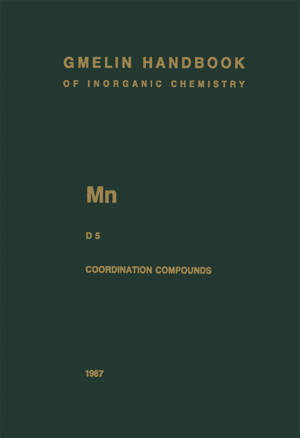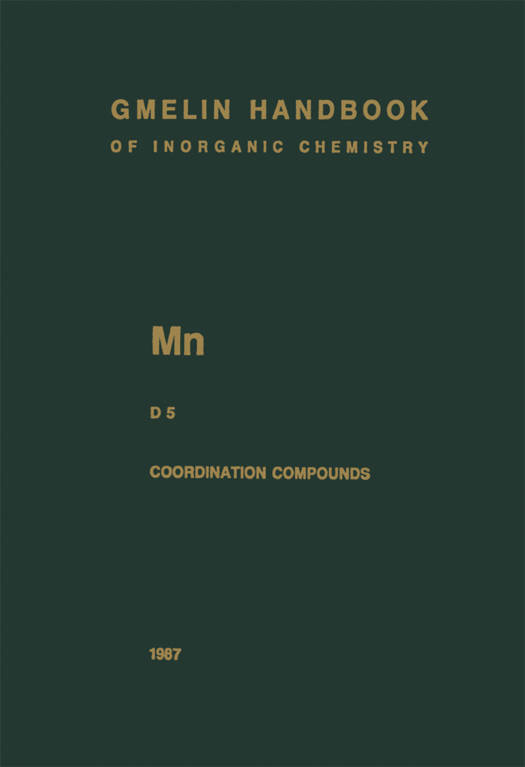
- Afhalen na 1 uur in een winkel met voorraad
- Gratis thuislevering in België vanaf € 30
- Ruim aanbod met 7 miljoen producten
- Afhalen na 1 uur in een winkel met voorraad
- Gratis thuislevering in België vanaf € 30
- Ruim aanbod met 7 miljoen producten
Zoeken
MN Manganese
Coordination Compounds 5
€ 93,45
+ 186 punten
Omschrijving
The present volume, "Manganese" D 5, continues the description of the manganese complexes. The arrangement of the complexes in these D volumes is based on the ligand type. The introduction, on p. 1, shows the classes of complexes, which have already been described in Chapters 1 to 21 in the Volumes D 1 (1979), D 2 (1980), D 3 (1982), and D 4 (1985). In Chapters 22 to 29 of this volume are treated complexes with amine-N-polycarboxylic acids, hydrazinecarboxylic acids, amides, hydrazides, derivatives of hydroxylamine (e.g., hydroxamic acids), oximes and nitroso compounds, azo compounds, and triazenes. A survey at the beginning of each of these sections gives information on the most characteristic features of the various complex types. Because of the complexometric relevance of the complexes with amine-N-polycarboxylic acids, there are many studies concerning the existence and the stability of the complexes in solution. Numerous X-ray investigations, reported for the complexes with urea or with amides and hydrazides of carboxylic acids, show the different structures of the compounds as a result of the varying bonding sites of the ligands. Complexes with hydrazides (e.g., with isonicotino- hydrazide) are of special interest, due to their biological activity. Complexes with hydroxamic acids, oximes or azo compounds have been studied mostly in aqueous organic or pure organic solvents. The characteristic intense colors of many solutions are used for the analytical determination of manganese.
Specificaties
Betrokkenen
- Uitgeverij:
Inhoud
- Aantal bladzijden:
- 349
- Taal:
- Engels
- Reeks:
Eigenschappen
- Productcode (EAN):
- 9783662081778
- Verschijningsdatum:
- 3/10/2013
- Uitvoering:
- Paperback
- Formaat:
- Trade paperback (VS)
- Afmetingen:
- 170 mm x 244 mm
- Gewicht:
- 598 g

Alleen bij Standaard Boekhandel
+ 186 punten op je klantenkaart van Standaard Boekhandel
Beoordelingen
We publiceren alleen reviews die voldoen aan de voorwaarden voor reviews. Bekijk onze voorwaarden voor reviews.







